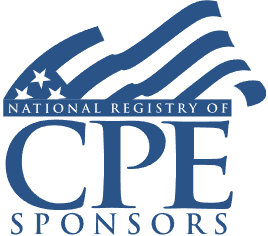Structuring Tax-Free M&A Deals: Navigating IRC 368 and 351, Selecting the Appropriate Structure

Course Details
- smart_display Format
On-Demand
- signal_cellular_alt Difficulty Level
Intermediate
- work Practice Area
Tax Law
- event Date
Thursday, January 16, 2020
- schedule Time
1:00 p.m. ET./10:00 a.m. PT
- timer Program Length
90 minutes
-
This 90-minute webinar is eligible in most states for 1.5 CLE credits.
-
BARBRI is a NASBA CPE sponsor and this 110-minute webinar is accredited for 2.0 CPE credits.
This CLE/CPE course will help tax counsel prepare to navigate the complex maze of structuring tax-free mergers and acquisitions and offer insights on the pros and cons of each option.
Faculty

Mr. Mandarino's practice focuses on corporate, tax and finance law. He is involved with a wide variety of businesses and transactions, including experience with compliance, planning and M&A activities for partnerships, individuals and corporations. Mr. Mandarino’s practice also includes representation in tax controversy work. He writes and speaks extensively on a wide range of business, tax and finance topics.

Mr. Golub assists the Tax Department in structuring transactions and analyzing and advising on highly technical areas such as 338(h)(10) elections, equity compensation, the golden parachute rules of Section 280G and qualified settlement funds. He assists clients with their international tax planning goals, including inversion transactions and other corporate and IP migrations and transfer pricing issues.
Description
Given the current ambiguous tax environment, tax-free mergers and acquisitions remain attractive. However, counsel must be prepared to guide clients in choosing the most appropriate structure and in strictly complying with IRS rules to qualify for a tax-free transaction.
Our panel will explain the intricacies and nuances of IRC 368 and 351, which provide for types of structures that qualify for tax-free treatment. Counsel must master which IRC section is most beneficial based on their clients' needs, taking into consideration the varying effects of each option on each stakeholder.
The panel will guide counsel through the types of corporate acquisition structures sanctioned by the IRS, outline the advantages of each, and offer their perspectives and best practices for choosing the most appropriate structure.
Listen as our distinguished panel explains the bases and best practices in structuring tax-free M&A deals. They will provide guidance on choosing the appropriate structure and complying with IRS regulations to ensure tax-free treatment.
Outline
- IRC 368 tax-free transactions
- Continuity of ownership interest
- Continuity of business enterprise
- Valid business purpose
- Step-transaction doctrine
- Consequences to stakeholders
- Acquiring entity
- Target entity
- Target shareholders
- Types of IRC 368 tax-free structures
- Stock-for-assets (Type A)
- Statutory merger
- Statutory consolidation
- Forward triangular merger
- Reverse triangular merger
- Stock-for-stock (Type B)
- Stock-for-assets (Type C)
- Stock-for-assets (Type A)
- IRC 351 mergers
Benefits
The panel will review these and other key issues:
- What are the IRC requirements for tax-free mergers and acquisitions?
- What are the types of structures recognized by the IRS?
- What are the advantages and disadvantages of each structure?
- How are all parties involved in the transaction impacted by the choice of a tax-free merger or acquisition?
NASBA Details
Learning Objectives
After completing this course, you will be able to:
- Determine the proper structure of an IRC 368 or 351 tax-free transaction
- Recognize the issues of a transaction to avoid a taxable event
- Ascertain the pros and cons of each structure recognized by the IRS
- Identify the effect of a tax-free merger or acquisition on all parties involved
- Field of Study: Taxes
- Level of Knowledge: Intermediate
- Advance Preparation: None
- Teaching Method: Seminar/Lecture
- Delivery Method: Group-Internet (via computer)
- Attendance Monitoring Method: Attendance is monitored electronically via a participant's PIN and through a series of attendance verification prompts displayed throughout the program
- Prerequisite: Three years+ business or public firm experience at mid-level within the organization, preparing complex tax forms and schedules; supervisory authority over other preparers/accountants. Working knowledge of partnership or corporate structure, operating agreements, and shareholder agreements.

Strafford Publications, Inc. is registered with the National Association of State Boards of Accountancy (NASBA) as a sponsor of continuing professional education on the National Registry of CPE Sponsors. State boards of Accountancy have final authority on the acceptance of individual courses for CPE Credits. Complaints regarding registered sponsons may be submitted to NASBA through its website: www.nasbaregistry.org.
Related Courses

Taxation of U.S. Persons Owning Foreign Corporations: Strategies for Subpart F and GILTI Inclusions
Friday, April 11, 2025
1:00 p.m. ET./10:00 a.m. PT

U.S. Taxation of Foreign Individuals and Businesses: IRS Compliance and Enforcement
Tuesday, April 22, 2025
1:00 p.m. ET./10:00 a.m. PT

Equity Compensation Grants in Partnerships and LLCs: Overcoming Tax Challenges and Key Planning Techniques
Tuesday, April 22, 2025
1:00 p.m. ET./10:00 a.m. PT
Recommended Resources
How CPE Can Bridge the Gap Between What You Know and What You Need to Know
- Career Advancement
Gain a Competitive Edge Through Efficient CPE Strategies
- Learning & Development
- Business & Professional Skills
- Career Advancement